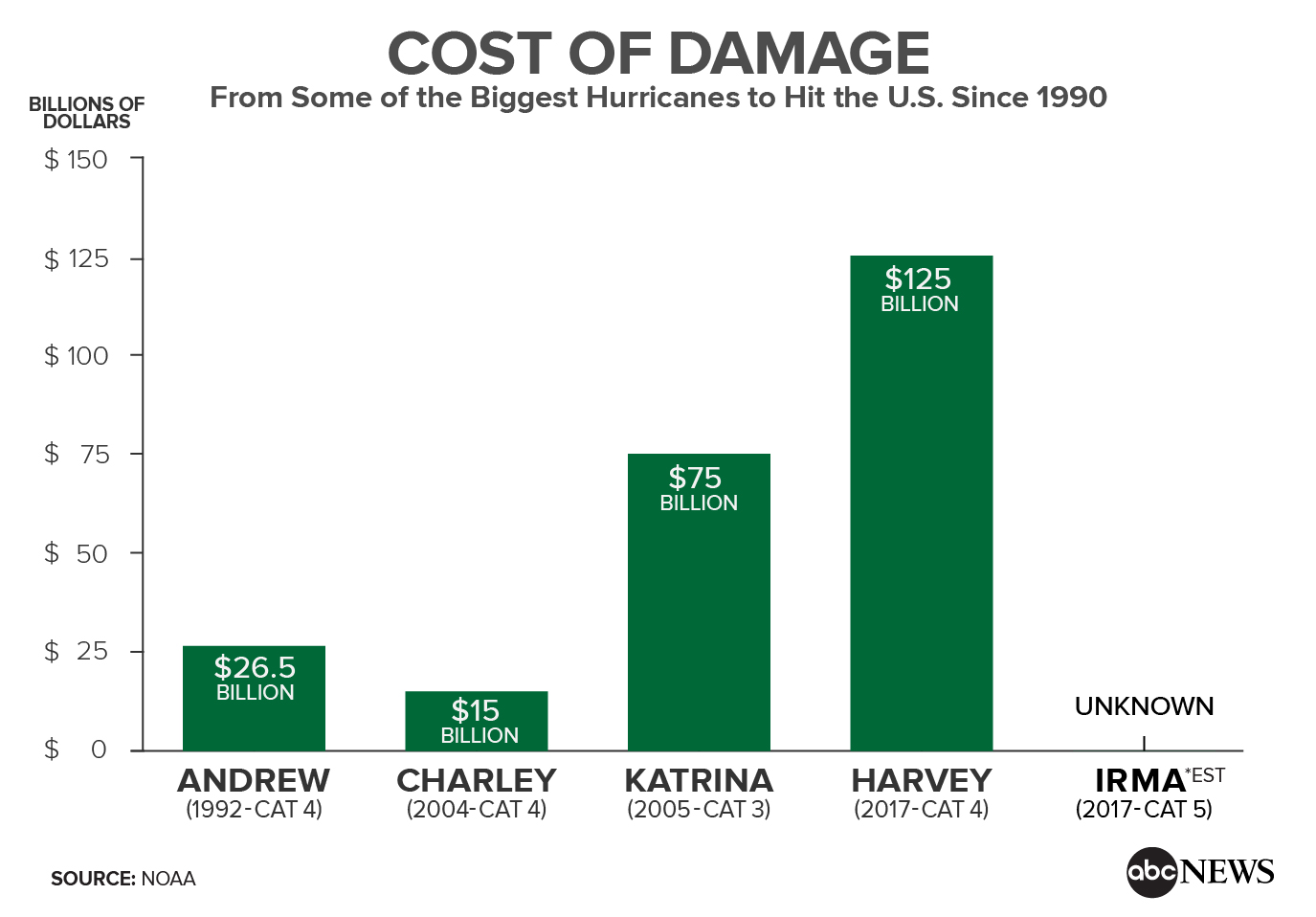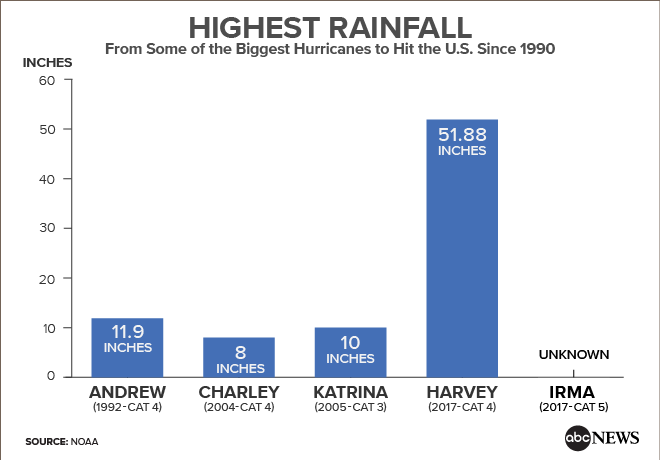How massive Hurricane Irma compares with other deadly storms
Looking at deaths, damage, rainfall and wind speeds of major hurricanes.
— -- Hurricane Irma is believed to be the most powerful Atlantic storm in a decade, but its predecessors in both the Gulf of Mexico and the Atlantic Ocean have also caused their share of death and destruction.
This year is the 25th anniversary of Hurricane Andrew, which many are comparing with Irma because of their somewhat similar paths.
While Andrew developed in the Atlantic and crossed southern Florida before hitting Louisiana, Irma is expected to hit southern Florida and move up the East Coast.
Both of the storms had wind speeds so high, measuring instruments had trouble reading the levels or could not withstand the conditions. The National Oceanic and Atmospheric Administration (NOAA) said many of the instruments during Andrew broke. Because of high windspeeds during Irma, the anemometer at the weather station in the hard-hit island of Barbuda were unable to record the wind levels.
In the end, NOAA reported that there were sustained winds of 142 miles per hour and gusts of up to 169 miles per hour during 1992's Andrew. So far, the winds with Irma have been recorded at 185 miles per hour.

Several storms have caused billions of dollars in damages to the state of Florida. Andrew caused an estimated $26.5 billion in damages, while Charley and Frances, both of which were in 2004, caused $15 billion and $8.9 billion respectively.
The most expensive hurricane damage recovery in recent years was after Hurricane Katrina in 2005, though those amounts may be outpaced by Hurricane Harvey. Since Harvey hit less than two weeks ago, the true extent of the damage remains unclear, but Texas Gov. Greg Abbott said that it may have caused up to $125 billion in damages.

One area where Harvey clearly surpassed its predecessors is the amount of rain that came with the storm.
All told, with the 51.88 inches of rain that was recorded in Cedar Bayou, Texas, Harvey brought the highest rainfall total to the continental U.S. from a single storm.
The amount of rainfall from Hurricane Katrina pales in comparison, with only 10 inches.
But, much of the damage caused by Katrina was a result of levees in and near New Orleans, Louisiana, breaking and flooding nearby areas. The resulting damage contributed to Katrina earning the infamous title of deadliest hurricane in the U.S. since at least 1990. About 1,200 people died in its aftermath, according to NOAA.

The death toll from Harvey is not yet final, as officials manage the aftermath of the storm and continue recovery efforts. So far, at least 60 deaths have been reported in the wake of the August storm.
